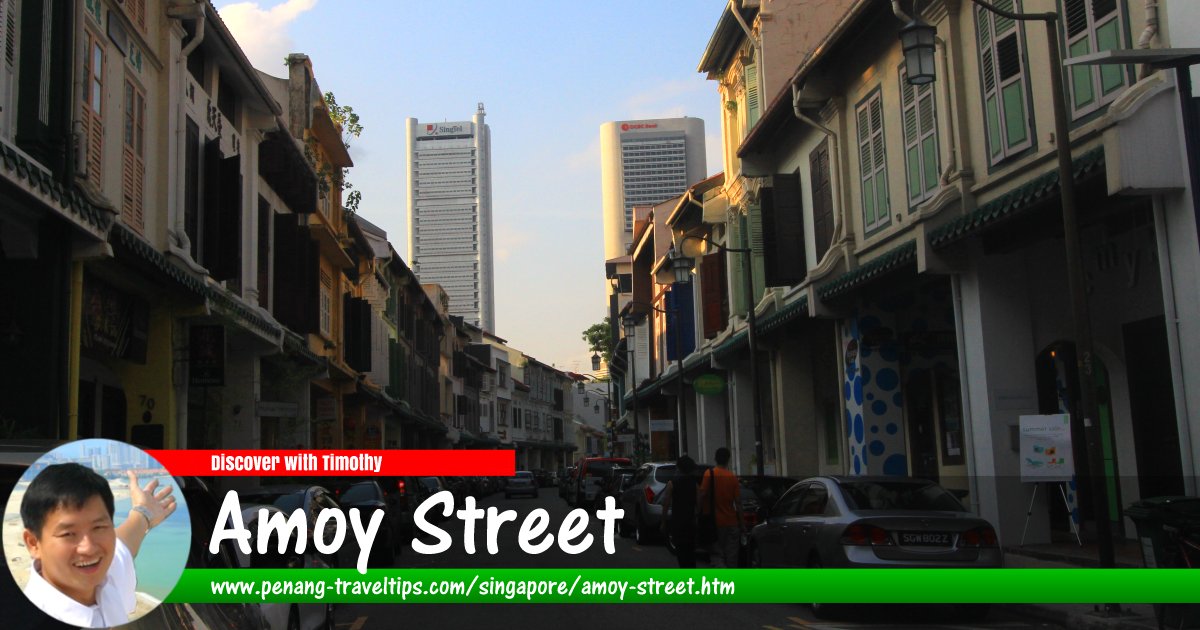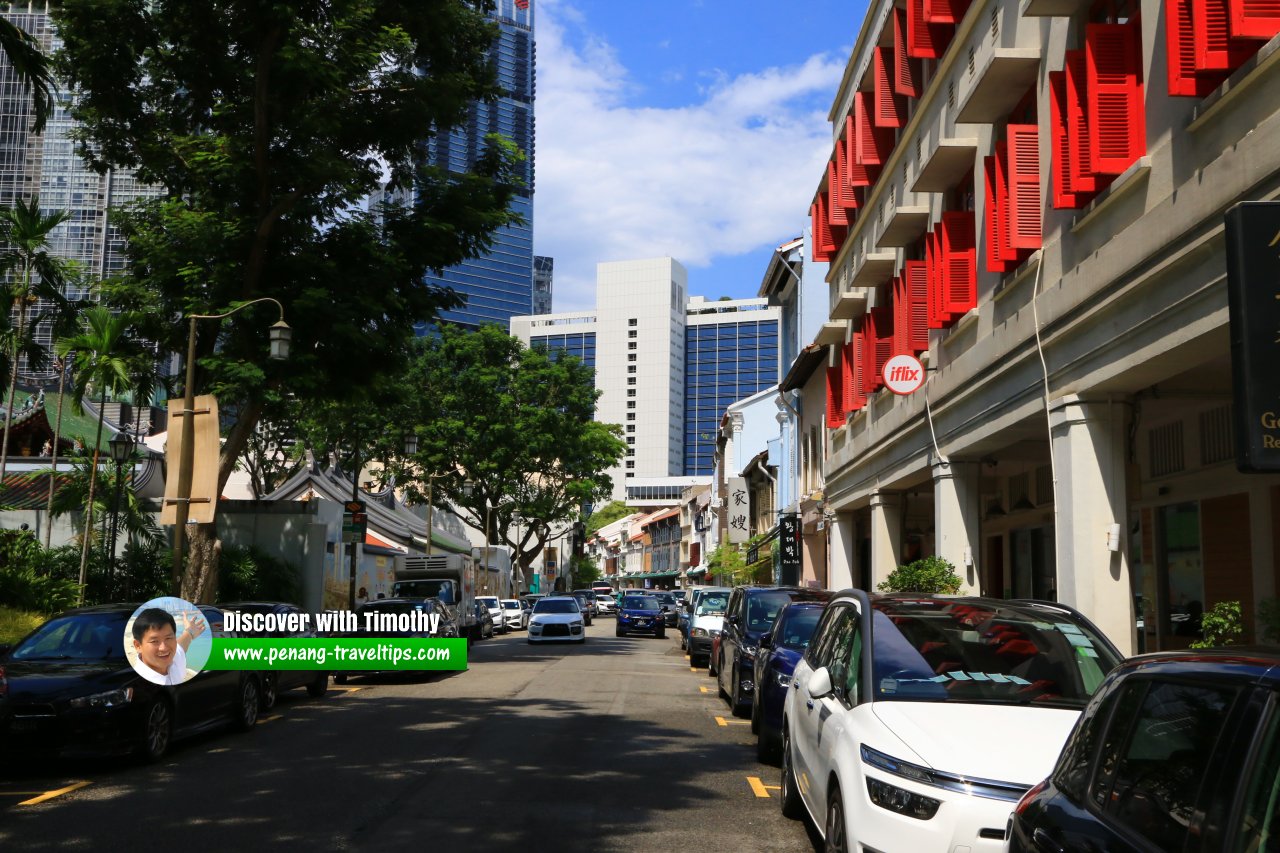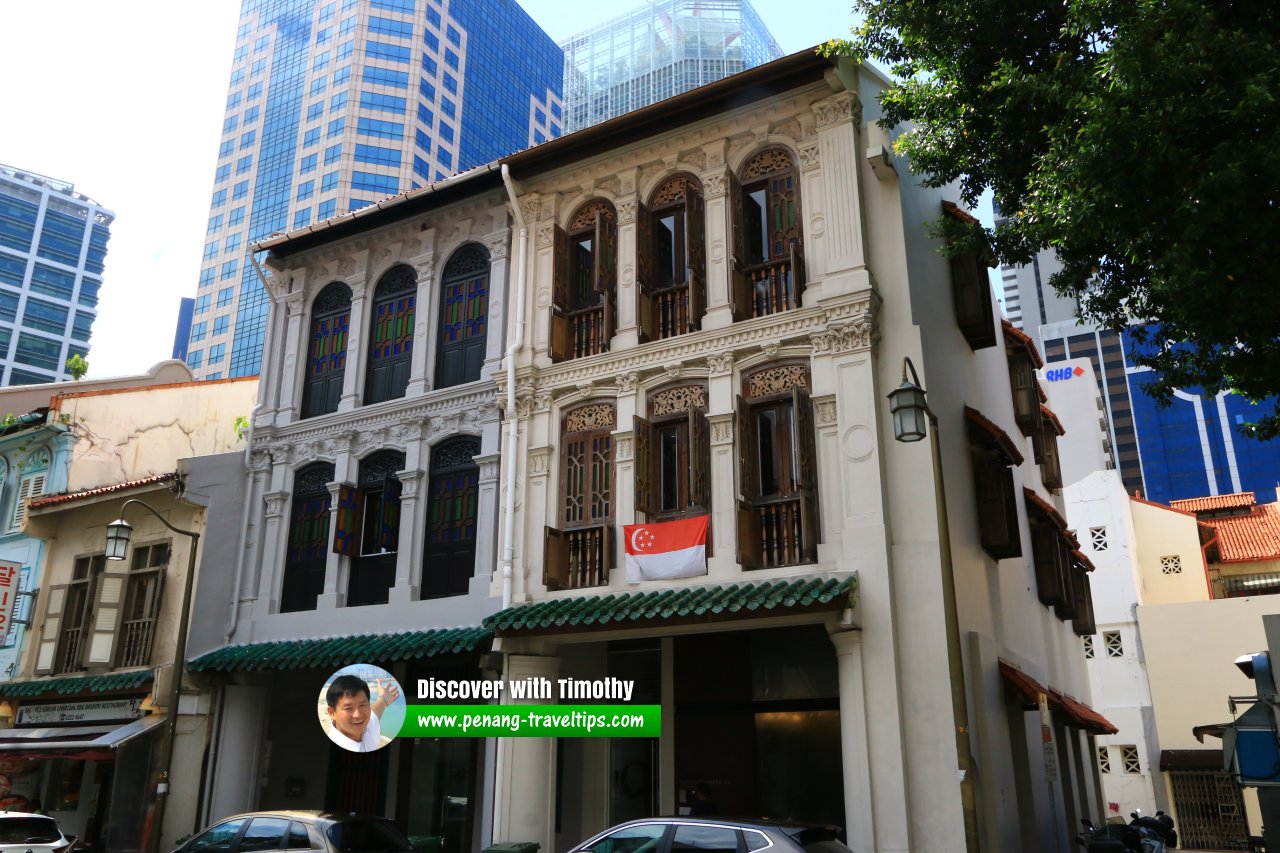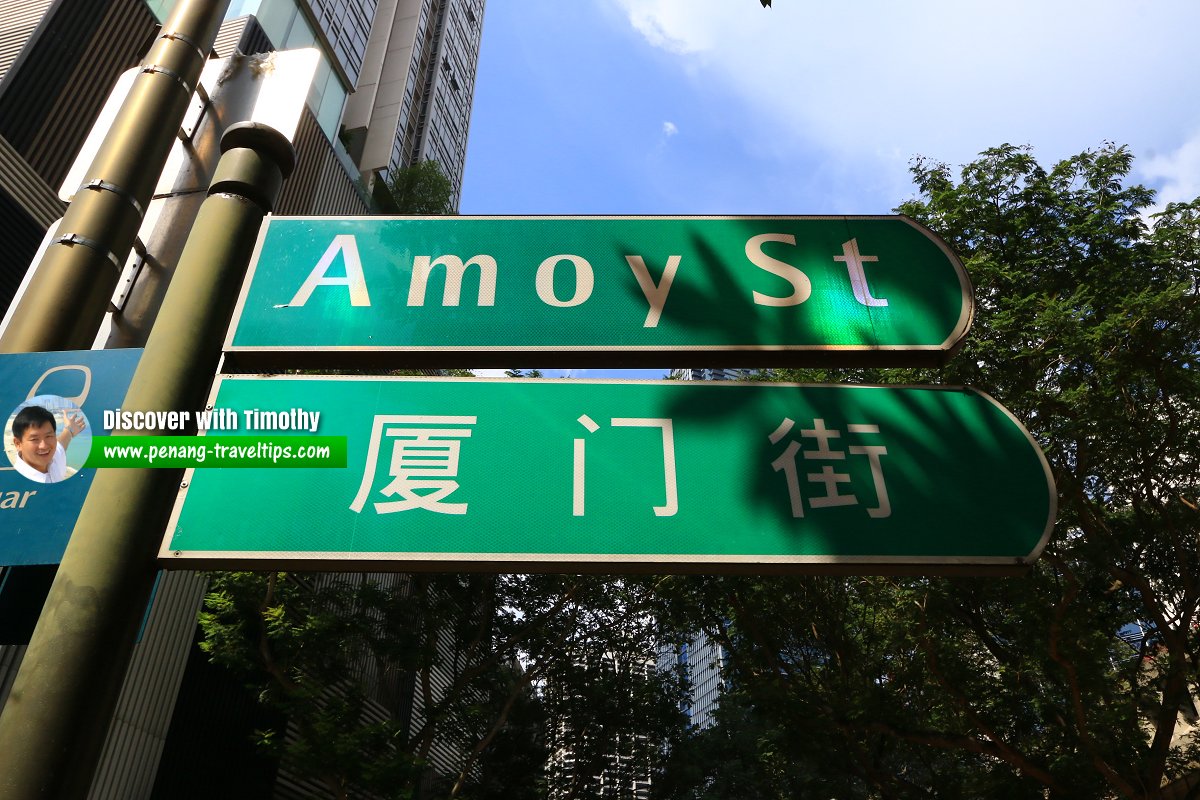 Amoy Street, Singapore (8 July 2011)
Amoy Street, Singapore (8 July 2011)
Amoy Street (Simplified Chinese: 厦门街, Traditional Chinese: 廈門街; Pinyin: Xiàmén Jiē
 ) is a street in the Singapore Chinatown. The vehicular portion of Amoy Street runs from the intersection with Telok Ayer Street and Mccallum Street in the south to the junction with Cross Street in the north. After the junction with Cross Street, Amoy Street continues as a pedestrian mall to end at Pekin Street, in an area now known as Far East Square.
) is a street in the Singapore Chinatown. The vehicular portion of Amoy Street runs from the intersection with Telok Ayer Street and Mccallum Street in the south to the junction with Cross Street in the north. After the junction with Cross Street, Amoy Street continues as a pedestrian mall to end at Pekin Street, in an area now known as Far East Square.Amoy Street was named after the city of Xiamen (厦门), a port city in Fujian Province. Amoy is the anglicised transliteration of the Zhangzhou pronunciation for Xiamen. The city of Xiamen was the port from which a great number of Chinese immigrants left for Singapore in the 19th century. As a result of the influx of Chinese from Xiamen, the main Chinese dialect spoken in Singapore is Hokkien, the Xiamen form of the Minnan language.
(The Hokkien spoken in Singapore is different from the Hokkien spoken in Penang, as the forefathers of the Hokkien people in Penang come from Zhangzhou, a different port city in Fujian Province.)
Amoy Street is believed to have been laid around 1830. It has appeared on the George Coleman Map of Singapore dating to 1836. It is located immediately behind Telok Ayer Street, which during the 1830's was still facing the shoreline. The back portion of the Thian Hock Keng Temple was at Amoy Street. The local Hokkien people called the it Ma Chu Keng Au, meaning "road behind the Mazu Temple". Mazu Temple refers to Thian Hock Keng.
Map of Amoy Street, Singapore
Sights along Amoy Street
- Siang Cho Keong Temple (GPS: 1.28003, 103.84656)

 Amoy Street, Singapore (1 August 2017)
Amoy Street, Singapore (1 August 2017)
 Two beautifully restored 3-storey pre-war townhouses on Amoy Street. (1 August 2017)
Two beautifully restored 3-storey pre-war townhouses on Amoy Street. (1 August 2017)
 Amoy Street, Singapore (1 August 2017)
Amoy Street, Singapore (1 August 2017)
 View of Amoy Street towards Siang Cho Keong Temple. (8 July 2011)
View of Amoy Street towards Siang Cho Keong Temple. (8 July 2011)
 View of Amoy Street towards Siang Cho Keong Temple. (1 August 2017)
View of Amoy Street towards Siang Cho Keong Temple. (1 August 2017)
 Amoy Street roadsign (1 August 2017)
Amoy Street roadsign (1 August 2017)
Amoy Street Singapore on Google Street View
Amoy Street Singapore (Mar 2022)References
- Singapore Street Names by Victor R Savage and Brenda S.A. Yeoh (2004), ISBN 981-210-364-3
List of the Streets in Singapore; Discover Singapore
 Copyright © 2003-2025 Timothy Tye. All Rights Reserved.
Copyright © 2003-2025 Timothy Tye. All Rights Reserved.
Copyright © 2003-2025 Timothy Tye. All Rights Reserved.

 Go Back
Go Back